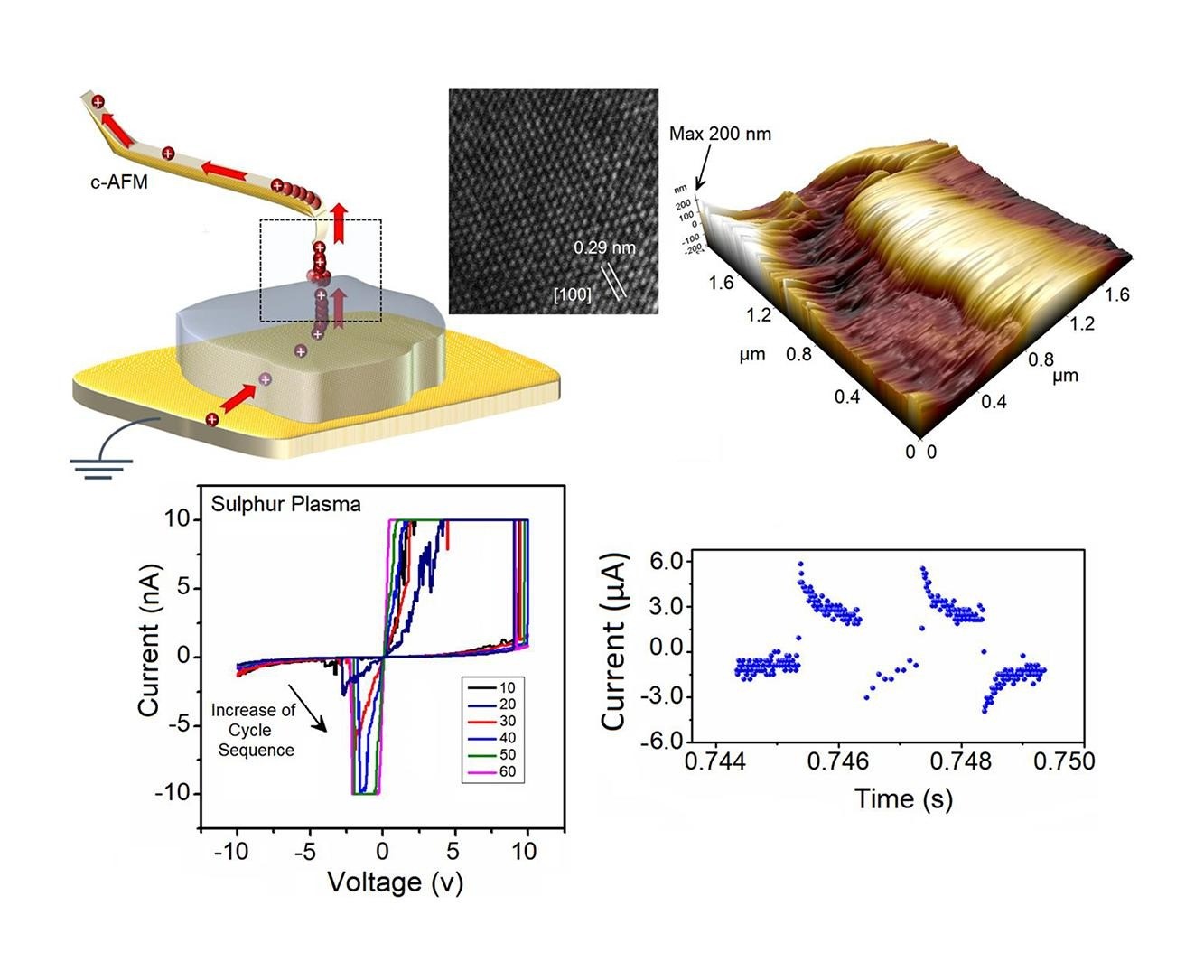

【International Papers】Plasma-modulated supercapacitive-coupled memristive behavior of two-dimensional gallium oxide channels towards the realization of tunable semiconductor–metal nanoelectronic gates
日期:2024-08-09阅读:579
Researchers from the Ghent University have published a dissertation titled "Plasma-modulated supercapacitive-coupled memristive behavior of two-dimensional gallium oxide channels towards the realization of tunable semiconductor–metal nanoelectronic gates" in Applied Surface Science.
Abstract
This study explores the opportunities of plasma treatment of ultra-thin metal-oxide films to enable the design of 2D electronic channels with tunable charge storage/transfer characteristics. The plasma treatment enabled the nanoengineering of 2D Ga2O3 films. Study revealed that various plasma treatments altered the electronic characteristics of 2D Ga2O3, finally enabling the realization of supercapacitive-coupled memristive behavior of 2D structures. The c-AFM studies of 2D Ga2O3/Au hybridinterfaces, showed the evolution from zero I-V hysteresis loops to non-zero hysteresis loops. The plasma treatment of 2D films enabled the transition from capacitor-like behavior resembling nanobattries (Ar Plasma) to faradic pseudocapacitance/supercapacitive (Cl plasma) and, finally, to resistive-switching memristive behavior (SO2 plasma). Notably, the high specific capacitance of 113F.g−1 was achieved at the current density of 2.6 A.g−1 in the Ar + Cl plasma modified 2D Ga2O3 films. Moreover, the supercapacitive-coupled memristive properties of the 2D Ga2O3/Au hybrid interfaces facilitated the development of synapse-mimetic 2D electronic gates with adjustable retention characteristics. The electronic channel demonstrated the ability to emulate the depolarization characteristics of synaptic nodes, enabling the consistent reception and memorization of informative electrical signals. This was achieved with an energy consumption of 0.4 nJ per synaptic event at a frequency of 100 KHz.

DOI:doi.org/10.1016/j.apsusc.2024.160592


